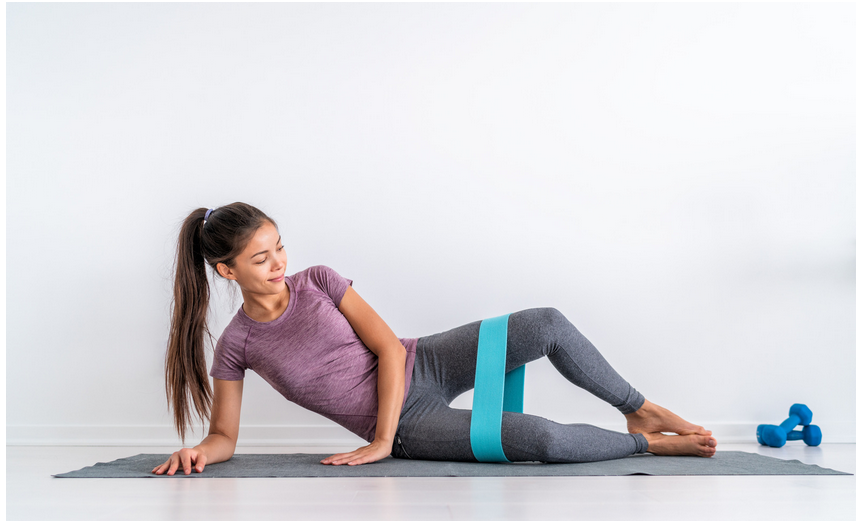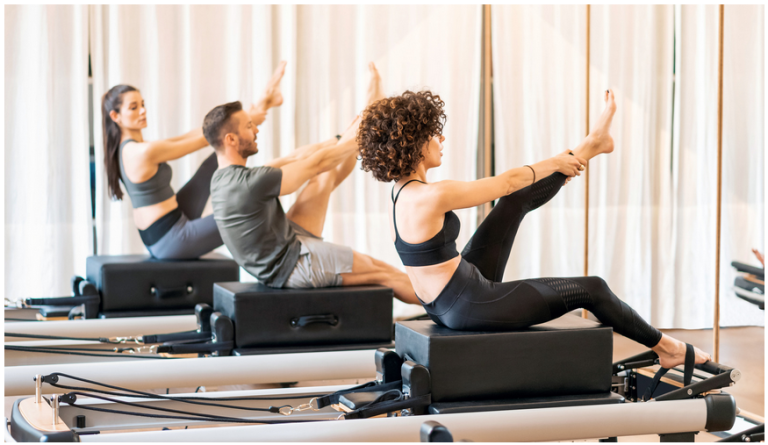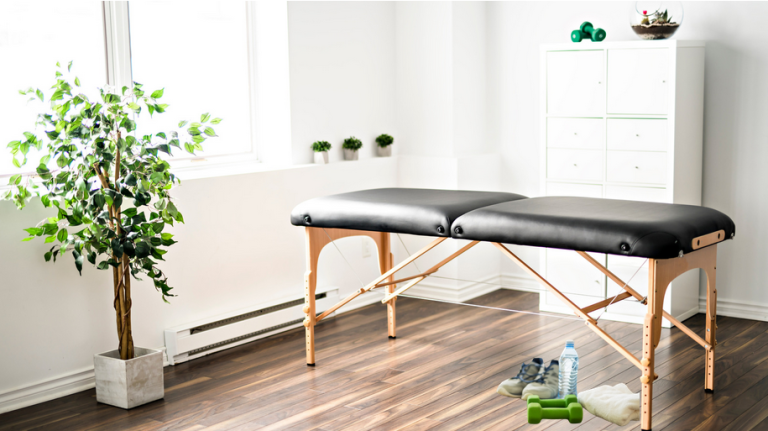
Stretching with Bands: How to Improve Your Flexibility and Mobility with Resistance Bands

Stretching is an essential part of any exercise routine, as it helps improve your flexibility, mobility, posture, and range of motion. Stretching can also help prevent injuries, reduce stiffness, and relieve stress. But did you know that you can enhance your stretching experience by using resistance bands?
Resistance stretching bands are super versatile and inexpensive tools that can add challenge, variety, and fun to your workouts. They can also help you get deeper into your stretches, as they create tension and resistance that your muscles have to work against. Resistance bands can also help you target specific muscles and joints that are hard to stretch without them.
In this article, you will learn how to use resistance bands for stretching and discover some of the best resistance band stretches for your upper and lower body. You will also find out how stretching with bands can benefit your health and fitness goals. Whether you are a beginner or an advanced exerciser, you will find some useful tips and tricks to make the most of your stretching routine with resistance bands.
What are resistance bands, and how do you use them for stretching?

Resistance bands are elastic bands that come in different shapes, sizes, colors, and resistance levels. They are usually made of latex or rubber and can be flat, tubular, or looped. Resistance bands can be used for various types of exercises, such as strength training, cardio, yoga, pilates, and, of course, stretching.
To use resistance bands for stretching, you will need to hold one end of the band in each hand or wrap the band around a fixed object, such as a pole, a door, or a chair. Then, you will need to position your body in a way that creates tension in the band and stretches the target muscle or joint. You can adjust the intensity of the stretch by changing the length of the band, the distance between your hands, or the angle of your body.
There are two main types of stretching with bands: static and dynamic. Static stretching involves holding a stretch for a certain amount of time, usually 15 to 30 seconds, without moving. Dynamic stretching involves moving your body through a range of motion, usually 10 to 15 repetitions, with or without the band. Both types of stretching have their benefits and drawbacks, and you can use them depending on your goals, preferences, and fitness level.
Static stretching with bands can help you increase your flexibility and relax your muscles. It can also help you improve your posture and alignment, as the band can help you correct any imbalances or asymmetries in your body. Static stretching with bands is best done after a workout, when your muscles are warm and pliable, or as a separate session, when you want to focus on your flexibility.
Dynamic stretching with bands can help you increase your mobility and activate your muscles. It can also help you improve your coordination and balance, as the band can challenge your stability and proprioception. Dynamic stretching with bands is best done before a workout, when you want to warm up your muscles and joints, or as part of a workout, when you want to add some variety and challenge to your exercises.
6 Resistance Band Stretches for Your Upper Body
Your upper body consists of many muscles and joints that are involved in everyday activities, such as lifting, reaching, pulling, pushing, and typing. Stretching your upper body can help you prevent or relieve pain and tension in your neck, shoulders, back, chest, and arms. It can also help you improve your posture and prevent injuries. Here are six resistance band stretches for your upper body that you can try:
1. Overhead Shoulder Stretch
This stretch can help you stretch your shoulders, especially the deltoids and the rotator cuff muscles. It can also help you open up your chest and improve your posture.
- Hold a resistance band with both hands shoulder-width apart, and raise your arms overhead.
- Pull the band apart slightly, and keep your arms as straight as possible.
- Slowly lower the band behind your head until you feel a stretch in your shoulders and chest.
- Hold for 15 to 30 seconds, then slowly raise the band back to the starting position.
- Repeat 2 to 3 times.
2. Behind the Back Chest and Shoulder Stretch
This stretch can help you stretch your chest and shoulders, especially the pectoralis major and minor, and the anterior deltoid. It can also help you squeeze your shoulder blades and improve your posture.
- Hold a resistance band with both hands and bring it behind your back, at the level of your lower back.
- Hold the band with your palms facing up and your hands slightly wider than shoulder-width apart.
- Pull the band apart slightly, and keep your arms as straight as possible.
- Slowly lift the band up until you feel a stretch in your chest and shoulders.
- Hold for 15 to 30 seconds, then slowly lower the band back to the starting position.
- Repeat 2 to 3 times.
3. Cross-body shoulder stretch
This stretch can help you stretch your shoulders, especially the posterior deltoid and the trapezius. It can also help you release any knots or tightness in your upper back.
- Hold one end of a resistance band in your right hand and bring it across your chest, over your left shoulder.
- Hold the other end of the band in your left hand, behind your back, and near your right hip.
- Pull the band with both hands, creating tension, and keep your arms as straight as possible.
- Slowly move your right arm to the left until you feel a stretch in your right shoulder and upper back.
- Hold for 15 to 30 seconds, then slowly move your right arm back to the starting position.
- Repeat 2 to 3 times, then switch sides.
4. Neck Stretch
This stretch can help you stretch your neck, especially the sternocleidomastoid and the scalenes. It can also help you relieve any tension or stiffness in your neck.
- Hold one end of a resistance band in your right hand and bring it over your head to the left side of your head.
- Hold the other end of the band in your left hand and bring it behind your back, near your right hip.
- Pull the band with both hands, creating tension, and keep your arms as straight as possible.
- Slowly tilt your head to the left until you feel a stretch in the right side of your neck.
- Hold for 15 to 30 seconds, then slowly tilt your head back to the starting position.
- Repeat 2 to 3 times, then switch sides.
5. Upper Back Stretch
This stretch can help you stretch your upper back, especially the rhomboids and the latissimus dorsi. It can also help you open up your chest and improve your posture.
- Hold a resistance band with both hands shoulder-width apart and bring it in front of your chest, at the level of your shoulders.
- Pull the band apart slightly, and keep your arms as straight as possible.
- Slowly round your back and bring your arms forward until you feel a stretch in your upper back and chest.
- Hold for 15 to 30 seconds, then slowly bring your arms back to the starting position.
- Repeat 2 to 3 times.
6. Biceps Stretch
This stretch can help you stretch your biceps, especially the brachii and brachialis. It can also help you stretch your wrists and forearms.
- Hold one end of a resistance band in your right hand and bring it behind your back, near your left hip.
- Hold the other end of the band in your left hand and bring it in front of your chest, at the level of your right shoulder.
- Pull the band with both hands, creating tension, and keep your arms as straight as possible.
- Slowly rotate your right arm so that your palm faces down and your thumb points to the left.
- Slowly move your right arm to the left until you feel a stretch in your right biceps and forearm.
- Hold for 15 to 30 seconds, then slowly move your right arm back to the starting position.
- Repeat 2 to 3 times, then switch sides.
6 Resistance Band Stretches for Your Lower Body
Your lower body consists of many muscles and joints that are involved in everyday activities, such as walking, running, jumping, and squatting. Stretching your lower body can help you prevent or relieve pain and tension in your hips, legs, and feet. It can also help you improve your balance and stability. Here are six resistance band stretches for your lower body that you can try:
1. Hamstring Stretch
This stretch can help you stretch your hamstrings, especially the biceps femoris, the semitendinosus, and the semimembranosus. It can also help you stretch your calves and ankles.
- Sit on the floor with your legs straight in front of you, and loop a resistance band around the middle of your feet.
- Hold one end of the band in each hand and pull the band towards you, creating tension.
- Keep your legs straight and your toes pointed up, and slowly lean forward until you feel a stretch in the back of your legs and ankles.
- Hold for 15 to 30 seconds, then slowly lean back to the starting position.
- Repeat 2 to 3 times.
2. Quad Stretch
This stretch can help you stretch your quads, especially the rectus femoris, the vastus lateralis, the vastus medialis, and the vastus intermedius. It can also help you stretch your hip flexors and improve your balance.
- Kneel on the floor with your right leg bent in front of you and your left leg extended behind you.
- Loop a resistance band around your left foot, and hold one end of the band in each hand.
- Pull the band towards you, creating tension, and bring your hands over your right shoulder.
- Keep your torso upright and slowly pull your left heel towards your glutes until you feel a stretch in your left quadriceps and hip flexor.
- Hold for 15 to 30 seconds, then slowly release your left foot back to the starting position.
- Repeat 2 to 3 times, then switch sides.
3. Glute Stretch
This stretch can help you stretch your glutes, especially the gluteus maximus, the gluteus medius, and the gluteus minimus. It can also help you stretch your lower back and hips.
- Lie on your back on the floor and bend your knees, keeping your feet flat on the floor.
- Loop a resistance band around your right foot, and hold one end of the band in each hand.
- Lift your right leg off the floor and cross your right ankle over your left thigh, just above your left knee.
- Pull the band towards you, creating tension, and bring your hands to your chest.
- Keep your right knee open and slowly pull your left thigh towards your chest until you feel a stretch in your right glute and hip.
- Hold for 15 to 30 seconds, then slowly lower your left thigh back to the starting position.
- Repeat 2 to 3 times, then switch sides.
4. Inner Thigh Stretch
This stretch can help you stretch your inner thighs, especially the adductor magnus, the adductor longus, the adductor brevis, and the gracilis. It can also help you stretch your groin and improve your flexibility for splits.
- Sit on the floor with your legs straight and wide apart, and loop a resistance band around the middle of your feet.
- Hold one end of the band in each hand and pull the band towards you, creating tension.
- Keep your back straight and slowly lean forward until you feel a stretch in your inner thighs and groin.
- Hold for 15 to 30 seconds, then slowly lean back to the starting position.
- Repeat 2 to 3 times.
5. Calf Stretch
This stretch can help you stretch your calves, especially the gastrocnemius and the soleus. It can also help you stretch your ankles and feet.
- Stand up straight, and loop a resistance band around the ball of your right foot.
- Hold one end of the band in each hand and pull the band towards you, creating tension.
- Keep your right leg straight and your right heel on the floor, and slowly flex your right foot until you feel a stretch in your right calf and ankle.
- Hold for 15 to 30 seconds, then slowly relax your right foot back to the starting position.
- Repeat 2 to 3 times, then switch sides.
6. Hip Flexor Stretch
This stretch can help you stretch your hip flexors, especially the iliopsoas, the tensor fasciae latae, and the rectus femoris. It can also help you stretch your lower back and improve your posture.
- Stand up straight, and loop a resistance band around your right foot.
- Hold one end of the band in each hand and pull the band towards you, creating tension.
- Step back with your right leg and lower your right knee to the floor, forming a lunge position.
- Keep your left knee bent at 90 degrees and your left foot flat on the floor.
- Keep your torso upright and slowly push your hips forward until you feel a stretch in your right hip flexor and lower back.
- Hold for 15 to 30 seconds, then slowly return to the starting position.
- Repeat 2 to 3 times, then switch sides.
Summary and Conclusion
Stretching with bands is a great way to improve your flexibility and mobility, as well as prevent injuries, reduce stiffness, and relieve stress. Resistance bands can help you get deeper into your stretches, target specific muscles and joints, and add challenge and variety to your stretching routine.
Here are some of the key points to remember when stretching with bands:
- Choose a resistance band that suits your level of strength and flexibility. You can use different colors, sizes, and shapes of bands for different stretches and exercises.
- Use both static and dynamic stretching with bands, depending on your goals, preferences, and fitness level. Static stretching can help you increase your flexibility and relax your muscles, while dynamic stretching can help you increase your mobility and activate your muscles.
- Stretch your upper and lower body with bands, focusing on the major muscle groups and joints that are involved in everyday activities and movements. Some of the best resistance band stretches for your upper body are the overhead shoulder stretch, the behind-the-back chest and shoulder stretch, the cross-body shoulder stretch, the neck stretch, the upper back stretch, and the biceps stretch. Some of the best resistance band stretches for your lower body are the hamstring stretch, the quad stretch, the glute stretch, the inner thigh stretch, the calf stretch, and the hip flexor stretch.
- Stretch with bands regularly, at least 2 to 3 times a week, for optimal results. You can stretch with bands before or after a workout or as a separate session, depending on your schedule and goals. You can also combine stretching with bands with other types of exercises, such as strength training, cardio, yoga, or pilates, for a well-rounded and balanced workout routine.
- Stretch with bands safely and effectively, following the proper technique and guidelines. Always warm up before stretching, and avoid stretching cold or injured muscles. Breathe deeply and smoothly, and avoid holding your breath. Stretch to the point of mild discomfort, but not pain. Hold each stretch for 15 to 30 seconds, and repeat 2 to 3 times. Listen to your body, and adjust the intensity and duration of the stretch according to your needs and abilities.
Stretching with bands can be a fun and rewarding way to improve your health and fitness. By using resistance bands for stretching, you can enhance your stretching experience and enjoy the benefits of increased flexibility and mobility. Try some of the resistance band stretches we have shared with you and see how they can make a difference in your life. Happy stretching!
FAQs
Q: What are the benefits of stretching with bands?
A: Stretching with bands can help you improve your flexibility and mobility, prevent injuries, reduce stiffness, and relieve stress. Resistance bands can help you get deeper into your stretches, target specific muscles and joints, and add challenge and variety to your stretching routine. 1
Q: How often should I stretch with bands?
A: You should stretch with bands regularly, at least 2 to 3 times a week, for optimal results. You can stretch with bands before or after a workout or as a separate session, depending on your schedule and goals. You can also combine stretching with bands with other types of exercises, such as strength training, cardio, yoga, or pilates, for a well-rounded and balanced workout routine.
Q: How do I choose the right resistance band for stretching?
A: You should choose a resistance band that suits your level of strength and flexibility. You can use different colors, sizes, and shapes of bands for different stretches and exercises. Generally, the lighter the color, the lighter the resistance, and the darker the color, the heavier the resistance. You can also use flat bands, loop bands, or tube bands, depending on your preference and the type of stretch you want to do. 3
Q: How do I stretch safely and effectively with bands?
A: You should follow the proper technique and guidelines when stretching with bands to avoid injury and maximize the benefits. Here are some tips to stretch safely and effectively with bands:
- Always warm up before stretching, and avoid stretching cold or injured muscles.
- Breathe deeply and smoothly, and avoid holding your breath.
- Stretch to the point of mild discomfort, but not pain.
- Hold each stretch for 15 to 30 seconds, and repeat 2 to 3 times.
- Listen to your body, and adjust the intensity and duration of the stretch according to your needs and abilities. 4
References
- Acute Effects of Various Stretching Techniques on Range of Motion: A Systematic Review with Meta-Analysis This study found that a single bout of stretching can increase joint range of motion, regardless of the stretch intensity, participants’ trained state, stretching techniques, and sex.
- Effects of Stretching on Injury Risk Reduction and Balance: This study found that both pre-exercise and chronic stretching can reduce musculotendinous injury incidence, particularly in running-based sports, and that longer-term stretch training can improve balance and reduce falls.
- The Science of Strength Bands: This article summarized the research on the effectiveness of resistance bands for increasing muscle strength, size, and fat loss, as well as the advantages of resistance bands over free weights.



